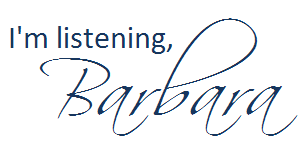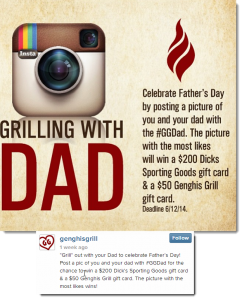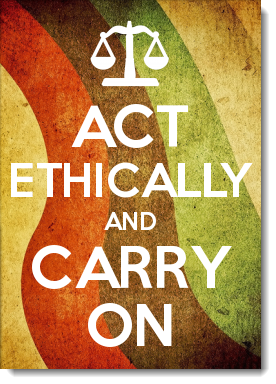
[Originally published Fall 2010. This post was featured by Lisa B. Marshall in her The Public Speaker podcast. Thanks, Lisa!]
When you’ve been invited to be a guest speaker for an organization’s luncheon or other meeting, you don’t want to be that speaker. And it can be terribly easy to be that speaker: You know, that high-maintenance one, or that boring/irrelevant one. You want to be the one who is memorable for positive reasons. Here’s a list of 14 ways to NOT suck.
- Learn as much as you can about your audience before you speak. (This is a good tip for any public speaking situation.) Even if you don’t know much about the organization beforehand, you can learn a lot during the mealtime, if that’s part of your engagement with them. During the meal, listen more than you talk. When your presentation begins, weave in examples that you know are relevant to this group.
- Find out from your contact at the organization what the norms are for speaking engagements like this one. Will the audience members expect handouts? Is there usually a Q&A session? What’s the best way for you to share your contact information with every audience member?
- Let your contact know what your A/V needs are as far in advance as possible, and only request what is necessary. Avoid last minute surprises, as they often cannot be accommodated — and they turn you into that speaker.
- Plan your presentation so that you can expand it or contract it as needed. Even though you may have been told you have 45 minutes, you may discover that the business portion of the meeting has run long, and you end up with just 30 minutes. Make no mention of shortening your presentation to your audience; just do it. Gracefully.
- Allow extra time in travel to arrive at the meeting location, especially if you have never been there before. Some things to keep in mind: Is there construction along your route? Do you cross train tracks on the way? When do the trains typically stop traffic? Do you know how to get into the parking lot? How far is it from the exterior doors to your meeting room? And never trust your GPS 100% to get you to a new location.
- Know how to use the technology you will be using, inside and out. Practice hooking up all the cords and cables and know how long it will take you. Know how to easily blacken the screen during your presentation when the slides are not needed (in PowerPoint, simply press B to blacken the screen, and then any other key to bring the slide back up). Do you have something new with you? In front of your audience is not the place to learn how to use your new presentation remote.
- Plan for the technology to fail. Always have hard-copy notes for your presentation, just in case you cannot rely on a PowerPoint slide to jog your memory for what to say. Save your presentation as a PowerPoint and as a PDF, and store it on your computer and a USB drive. (Yes, it’s like wearing a belt with suspenders. Twice. And I’m okay with that.)
- Never let your audience see anything on your computer other than the slide deck or other information you intend for them to see. They don’t (or at least shouldn’t) have any interest in watching you boot up your computer, open your file and put it in presentation mode. Keep the projector screen blank until you have your opening slide up. (And never be that speaker who preps her presentation in full view of the whole room while someone else is still speaking; I find this terribly rude to the other speaker.)
- Don’t count on the Internet working 100% perfectly. If I plan to show a YouTube video clip, I always download the video to my computer and show it from there. (I’ve recently been using YouTube Downloader, a free app, and it works quickly and easily for me on my PC.) If I plan to demo a certain website, I’ll use Snag-It to take and save a few screen captures to show in case I cannot access the site during my presentation.
- Provide contact information on each slide or at the end. I like to have a detailed contact info slide as the last one in my slide deck, and I leave that slide up during the Q&A session.
- If you refer to websites or blogs in your presentation, create a set of social bookmarks for your audience so they can go to one URL to find all the links and not spend time during your presentation attempting to furiously scribble down all the addresses. I now use Pinterest for my social bookmarks. Let your audience know early in the presentation where they can find all the links.
- Upload your slides to SlideShare at least a day before your presentation if you want your audience (and others) to have access to them. You can choose to keep the slides private until just before or after the presentation, if you wish.
- The show must go on; be prepared to speak even if you don’t look quite perfect. For example, yesterday, I got caught in a deluge just as I opened my car door arriving at a speaking event. Even with an umbrella, I was drenched (kind of like the cute, wet puppy at the top of this post — at least in my mind). My shoes and blazer sleeves were literally dripping when I entered the venue. What did I do? Dashed into the restroom, grabbed some paper towels, mopped up what I could, and put a smile on my face.
- Arrive with your speaker’s toolkit in tip-top order. I think I almost got a hug from the conference room tech guy at my last speaking event because I had everything I needed, and more. What’s in mine? Here’s what I typically carry with me:
- Computer & power cord
- Power strip
- External speakers with their power cord (just in case there’s no sound system attached to the projector)
- 3.5mm cord to connect speakers to computer (even if I have my Bluetooth-enabled computer and speakers with me, I have the cord as a backup)
- Projector (only if I know that there is not one available for me onsite)
- Presentation remote
- Extra set of batteries for anything that uses batteries
- Hard candy or throat lozenges
- More business cards than I think I could possibly need
So in a large nutshell, these are my 14 best tips on how not to suck as a guest speaker for an organization. What additional tips would you offer?






 Yesterday afternoon, I was excited to see that
Yesterday afternoon, I was excited to see that 
 As many of my readers may recall, I was a participant in a social media contest earlier this year
As many of my readers may recall, I was a participant in a social media contest earlier this year 


